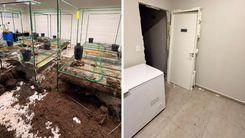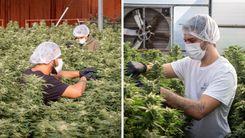"Não cuido só de crianças, cuido de famílias": o olhar sensível de uma pediatra sobre o uso do canabidiol na infância
Com sensibilidade clínica e escuta ativa, pediatra relata como o canabidiol tem transformado a vida de crianças com epilepsia, autismo e outras condições neurológicas complexas e de suas famílias também
Publicada em 06/08/2025

Com escuta sensível e tratamento individualizado, médica pediatra compartilha sua experiência com o uso do CBD em crianças com epilepsia, autismo e outros quadros neurológicos complexos | Divulgação
Não é fácil para uma família ouvir que o tratamento que já tentou de tudo ainda não funcionou. Para muitas crianças, a cannabis medicinal surge como um sopro de esperança quando os caminhos da medicina convencional se esgotam. Segundo a pediatra entrevistada pelo Sechat, o uso do canabidiol (CBD) em crianças é reservado, em geral, a casos refratários, quando há resistência às terapias convencionais ou efeitos colaterais intensos.
“Antes de indicar, faço uma avaliação completa do histórico clínico, exames, medicamentos tentados, rotina da criança e o suporte da família”, explica. É um cuidado que vai muito além da prescrição: é a construção de um olhar atento, empático e singular. “Não há receita de bolo”, reforça ela. Cada protocolo é moldado como um artesanato clínico, respeitando o tempo, o corpo e as possibilidades da criança e de quem a acompanha.
As síndromes epilépticas como Dravet, Lennox-Gastaut e esclerose tuberosa são algumas das condições neurológicas mais comuns para indicação do canabidiol. Mas o tratamento também tem trazido resultados expressivos em casos de Transtorno do Espectro Autista (TEA), TDAH, paralisia cerebral, doenças neurológicas raras e dores crônicas. Em muitos desses casos, a cannabis se torna uma forma de reduzir a chamada “polifarmácia”, o uso excessivo de medicamentos que impactam órgãos como fígado e rins.
Ainda assim, a médica faz questão de lembrar: o sistema endocanabinoide da criança está em pleno desenvolvimento e, por isso, é essencial respeitar o tempo do corpo. “Começamos com doses bem baixas, entre 0,5 a 1 mg/kg/dia, e vamos ajustando lentamente até encontrar a menor dose eficaz, com o mínimo de efeitos colaterais”, disse a médica.
Cuidar de crianças é cuidar de famílias
Ao iniciar o tratamento, os pais se tornam peças fundamentais no processo terapêutico. “Costumo dizer que não cuido apenas de crianças neurodivergentes, mas de famílias neurodivergentes”, relata. O acolhimento inclui conversas sinceras sobre as comorbidades, expectativas, rotinas e, principalmente, sobre a saúde mental dos cuidadores. “Cuidar de uma criança em sofrimento é, por si só, um desafio que exige empatia clínica e escuta ativa”, reflete Lays.
A rotina com o óleo também exige dedicação: seguir a dosagem e os horários com rigor, observar alterações no comportamento, sono, apetite, crises e manter registros para que o médico possa ajustar o tratamento com precisão. O produto, claro, precisa ter qualidade e rastreabilidade. “Não é qualquer óleo. É uma medicação e deve ser tratada como tal”, reforça.
Quando o canabidiol abre portas que pareciam fechadas
Na prática clínica, os resultados não se resumem aos números. Estão nos olhares trocados, nos sorrisos que antes não vinham, nas interações que nascem com delicadeza. Um dos casos mais marcantes acompanhados pela médica foi o de uma criança com encefalopatia crônica não progressiva, acamada e em uso de cinco anticonvulsivantes. Com o uso do CBD, as crises cessaram, o sono melhorou, a espasticidade reduziu e, aos poucos, a criança passou a fixar o olhar, responder a estímulos e até “escolher o lado da cama”.
Outro relato comovente é o de um menino com autismo, agressividade severa e fralda aos 7 anos. Em poucos dias após o início do tratamento, abandonou a fralda por conta própria, passou a dormir melhor, socializar e acompanhar atividades na escola. “A mãe chorava ao dizer que, pela primeira vez, foram juntos ao cinema”, conta a pediatra. “E de efeitos colaterais? Agora ele fala demais”, se expressa com risos. “Mas esses são os efeitos que acolhemos com carinho.”
Superando o medo com informação e cuidado
Apesar dos avanços e dos casos de sucesso, ainda há resistência. Parte disso vem do desconhecimento e do estigma que envolve a planta em si, conhecida popularmente como maconha e, por vezes, endemonizada pela sociedade.. “A primeira coisa que faço é desassociar o uso médico da cannabis do uso recreativo. Explico os fundamentos científicos, mostro estudos e relato os casos que acompanho com responsabilidade”, diz a pediatra.
Entre os próprios profissionais de saúde, o debate começa a amadurecer. “O preconceito está cedendo espaço à curiosidade e à escuta. Com diálogo e evidência, mostramos que não se trata de substituir tratamentos, mas de oferecer mais uma ferramenta de cuidado, especialmente para quem já tentou tudo e continua em sofrimento”, pondera.
Um tratamento que devolve possibilidades
Ao fim de cada relato, há uma mesma mensagem: o tratamento com canabidiol não é mágica, mas pode ser uma ponte. Uma ponte que liga o sofrimento ao alívio, o isolamento ao vínculo, a exaustão à esperança. “Quando a criança começa a responder bem, ela consegue se engajar melhor nas terapias. E aí vemos que não é só sobre convulsões ou crises, é sobre dar àquela criança a chance de alcançar o seu potencial. E à família, a chance de respirar. De sonhar de novo”, finaliza Lays.
Leia Também
Entre o afeto e a verdade: como falar sobre cannabis com os filhos
Autismo e Cannabis Medicinal: a ciência e a sociedade caminhando juntas












